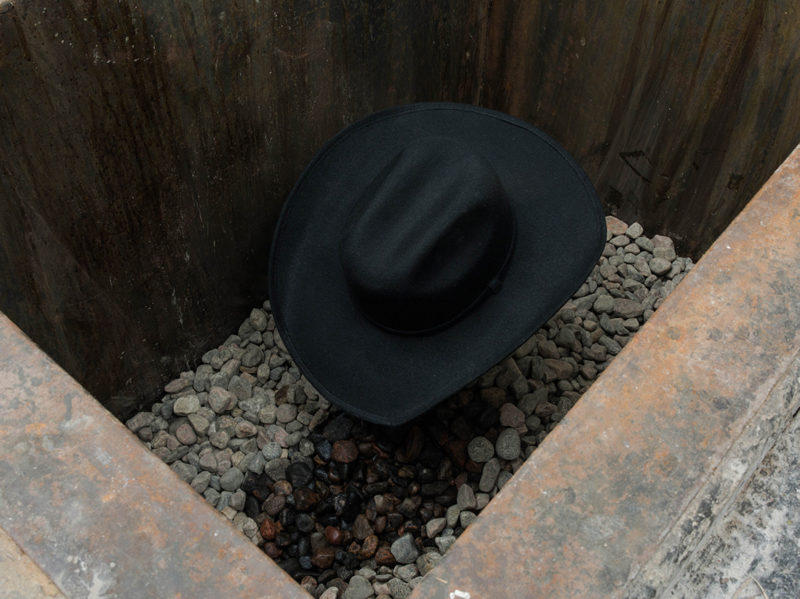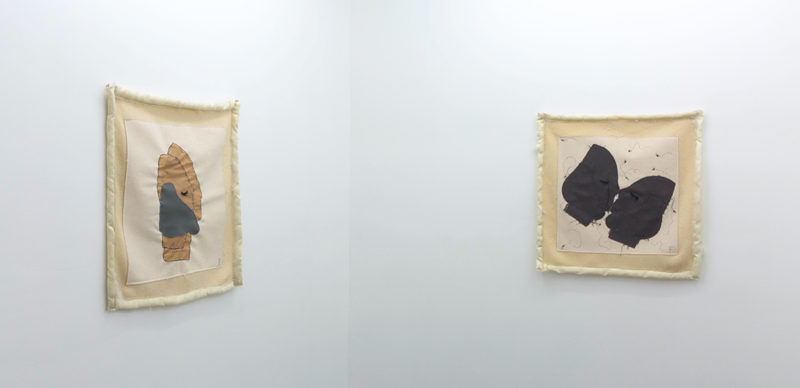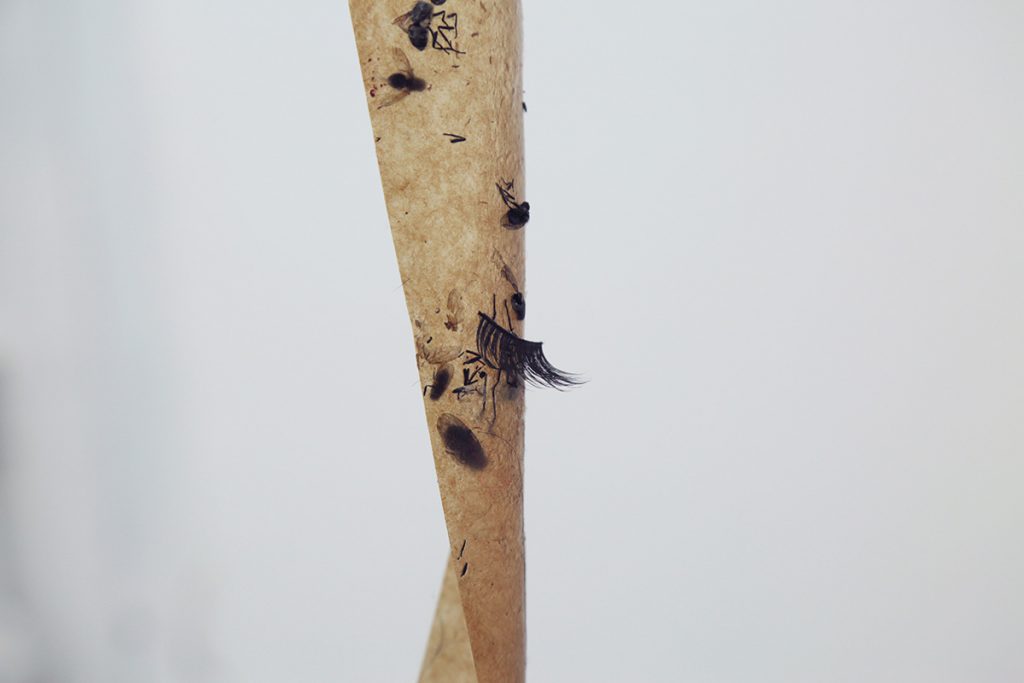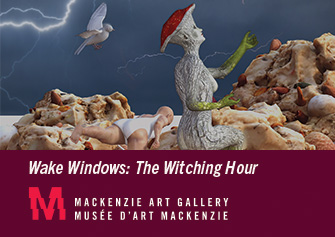Animal Love: Catherine P. at Egret Egress
11 July 2019
By Jessica Baldanza
At first glance, the titular Animal Love of Catherine P.’s solo exhibition at Egret Egress is puppy love—the kind of sanguine affection one feels capable of in the early days of a new romance. This impression is gleaned from Catherine P.’s saccharine artist’s statement, as well as the soft textile wall-works of naively articulated pups batting lashes and touching noses. And yet, the works inspire a palpable dis-ease, the source of which reveals itself only when one makes themselves vulnerable to the works, so as to reflect the circumstances in which they were made.
Catherine P.’s wall-works are composed of fabric scraps (including cozy wool, sturdy leather, and fragile wax paper) hand sewn or bound by woven-in needles with piercing exposed tips. Sewing feels an apt medium for the imagining of reparative, constructive love-making: cyclic actions requiring minute, careful motions that create small lesions in all materials, in order to bind them together into something of substance. The intimacy of this impression is aided by the gallery’s small size (kudos to the gallerist’s capacity for optimization, an essential skill amidst Toronto’s prohibitive rental market) and the roaring fire furnace heating the adjacent studio room.
Following the wall textiles, my neck is beckoned downward toward a cavernous rectangle that reaches about three feet below ground—the kind of environmental oddity one can expect in repurposed industrial spaces such as these. A men’s black cowboy hat is carefully placed on the pebble-covered base, its total opacity obscuring what lies beneath. I imagine the hat is a burial marker, or that a live man stands below it in wait. The unsettling presence of either possibility introduces a distinctly surveilling undertone to the space.

By the front brim of the hat, a circular patch of pebbles is perpetually wet (the artist used oil to prevent evaporation), as if a dog has marked its territory. Such territorializing has associations of loyalty, a trait affectionately associated with dogs and prized amongst people. Meanwhile, the heavily imbued biological process of urination bears associations with eroticism and intimacy, humiliation and fear. The effect of pairing faithfulness with possession inspires a reluctant affection in the viewer—perhaps our first clue that Animal Love is not Puppy Love, after all.
As I continue to move clockwise through the exhibition space, I am confronted at eye level with several inches of thick, grotesque sticky tape, suspended from a branch mounted on the wall. The tape is a fly trap outstretched from a small cylindrical canister, similar to those which house the nostalgic medium of analogue film. Flies, an insect often found scavenging rotting remains, are themselves the remains here, adhering to the tacky surface. Their spindly black legs mingle with the dark hairs of false lashes and the artist’s own tresses, which become indistinguishable in each other’s company. By this point, the subject of mortality becomes unavoidable.
The artist’s statement—a naïve love poem handwritten on thirty pieces of cardstock—is written post-mortem.
Our love is pure
When we kiss, we close our eyes
And when we close our eyes
We feel our mouths moving
Our two faces, passing saliva
Our wet tongues, dancing to the hum of flies
Everything is forgiven and forgotten
Everything is remembered
In your absence, I kiss myself.
I kiss the flies. I kiss the chain. I kiss your hat.
I close my eyes tightly
I kiss you forever
In a prior discussion with the artist, she stated that the poem was written with determined ingenuousness. It seems that for Catherine P., the child-like posture of the poem is implicitly purer than an adult’s, and so too is the love that it generates. The valorization of a child’s perspective sets the post-mortem tone in sharp relief, revealing a reluctance to lay prior periods to rest.

I am unsettled by the troubling chasm between the kissing dogs, the nauseating sentimentality of the love described in the poem, and the ominous men’s hat and grisly fly trap—so much so that I find an unlikely peer for Animal Love in Stanley Kubrick’s The Shining. In one of the film’s most iconic scenes, the protagonist Danny encounters twin girls who beckon the young boy to “play with them forever.” The viewer understands the ambiguous “play” as tacitly life-threatening when qualified with “forever.” Likewise, Catherine P.’s poem’s fairy-tale love, though tender, reads potentially Märchen, as their kiss becomes “kiss you forever.”
Animal Love reveals love, whether familial or romantic, as polycephalic—a multi-headed entity. The exhibition flattens the time between the naïveté necessary to participate in love and the moment of its rose-tinted recollection. Dogs have been known to visit the graves of their owners after they die. They bear a loyalty that transcends life itself, a kind of love many hope to give and receive. Yet, in order for a dog to visit your grave, you have to be dead.
Animal Love ran from February 9 – March 9, 2019 at Egret Egress in Toronto.
Feature image: Detail of work from Animal Love, 2019 by Catherine P. Photo courtesy of Egret Egress and the artist.



